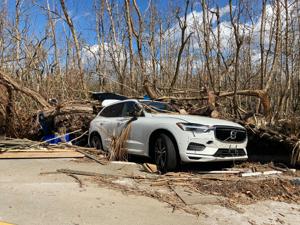(The Center Square) – Illinoisans are being urged to be on the lookout for flood-damaged vehicles from Hurricane Ian.
It is estimated that more than 350,000 vehicles may have been damaged by the storm.
Automotive experts say floodwaters can destroy, sometimes slowly, electronics, lubricants and mechanical systems in vehicles.
Carfax reports nearly 400,000 flooded cars were back on U.S. roads in 2021 because inevitably after a storm vehicles damaged in floods are often taken to other states.
Emilie Voss, public relations director at Carfax, said Illinois is in the top ten with the number of flood-damaged cars on the roadways.
“Ninth in the nation with about 13,300 statewide on the roads before Hurricane Ian that we know of that had some kind of flood event in their past,” said Voss.
Buyers are being urged to research a used car’s vehicle history report to make sure they know what they are buying. Through services like Carfax or the National Insurance Crime Bureau’s VINCheck, buyers can see if there’s anything in a vehicle’s history that raises a red flag.
Voss said it may be a good idea to have the vehicle thoroughly checked out by a mechanic.
“We recommend that people take that car for an independent inspection,” said Voss. “A trained mechanic has the eye to see things that you or I might not find.”
Voss adds the easiest flood damage test is also the most telling and that is the smell test. Mildew and mold have a distinct smell, and even trace amounts of either are pretty apparent.
Other signs include mud or silt in the glove compartment or under the seats, brittle wires under the dashboard, and fog or moisture beads in the interior exterior lights.
With the uptake of drivers buying electric vehicles, there is another hazard from flood-damaged cars. Firefighters in western Florida are responding to numerous calls concerning electric vehicle fires.
Jimmy Patronis, Florida’s state fire marshal shared videos on Twitter of fire crews putting out electric vehicle fires. He said when the batteries corrode after contracting salt water, they can start fires and be difficult to extinguish. Patronis called them “ticking time bombs.”







